Search the Special Collections and Archives Portal
Search Results
T-Shirt Color: Navy Blue; Front: National City Firefighters, Dept. Emblem; Back: NCFD National City Fire, approximately 2001-2012
Level of Description
File
Archival Collection
New York-New York Hotel and Casino 9-11 Heroes Tribute Collection
To request this item in person:
Collection Number: MS-00459
Collection Name: New York-New York Hotel and Casino 9-11 Heroes Tribute Collection
Box/Folder: Box 165
Collection Name: New York-New York Hotel and Casino 9-11 Heroes Tribute Collection
Box/Folder: Box 165
Archival Component
T-Shirt Color: Gray; Front: Midwest City Local 2066; Back: Midwest City Firefighters, Local Union Emblem, approximately 2001-2012
Level of Description
File
Archival Collection
New York-New York Hotel and Casino 9-11 Heroes Tribute Collection
To request this item in person:
Collection Number: MS-00459
Collection Name: New York-New York Hotel and Casino 9-11 Heroes Tribute Collection
Box/Folder: Box 196
Collection Name: New York-New York Hotel and Casino 9-11 Heroes Tribute Collection
Box/Folder: Box 196
Archival Component
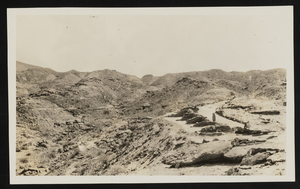
Ruins of the lost city of Saint Thomas, Nevada: photographic print
Date
1910 (year approximate) to 1930 (year approximate)
Archival Collection
Description
From the Chester R. Longwell Photograph Collection (PH-00311)
Image
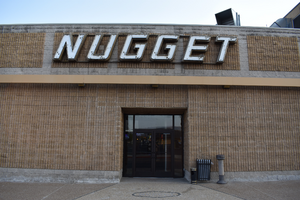
Carson Nugget wall mounted sign, Carson City, Nevada
Date
2020
Archival Collection
Description
View of a wall mounted sign for the Carson Nugget reading "Nugget" with unlit neon.
507 N Carson St, Carson City, NV 89701
Image

Film transparency of the mountains near Virginia City, Nevada, circa 1940s
Date
1940 to 1949
Archival Collection
Description
The mountains near Virginia City, Nevada. Virga can be seen falling from the clouds. Like many cities and towns in Nevada, Virginia City was a mining boomtown; it developed virtually overnight as a result of miners rushing to the Comstock Lode silver strike of 1859 on the eastern slopes of Mount Davidson. But, Virginia City far surpassed all others for its peak of population, technological advancements developed there, and for providing the population base upon which Nevada qualified for statehood. The riches of the Comstock Lode inspired men to hunt for silver mines throughout Nevada and other parts of the American West. At its peak, Virginia City had a population of over 25,000 residents and was called the richest city in America. Dominated by San Francisco moneyed interests, Virginia City was heralded as the sophisticated interior partner of San Francisco. “San Francisco on the coast and Virginia City inland” became the mantra of west coast Victorian entrepreneurs. Early Virginia City settlers were in large part the backwash from San Francisco and the California Gold Rush, ten years before. Mine owners who made a killing in the Comstock mines spent most of their wealth in San Francisco.
Image
Dateline Atlantic City videocassettes
Level of Description
File
Archival Collection
Sonny Schwartz Recordings and Papers
To request this item in person:
Collection Number: MS-00433
Collection Name: Sonny Schwartz Recordings and Papers
Box/Folder: N/A
Collection Name: Sonny Schwartz Recordings and Papers
Box/Folder: N/A
Archival Component
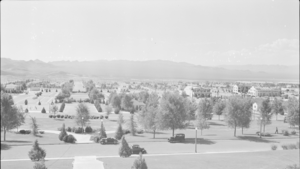
Film transparency showing streets of Boulder City, Nevada, circa 1933-1940s
Date
1933 to 1949
Archival Collection
Description
An image of cars, buildings, and landscape of Boulder City; the Boulder Dam Hotel, located at 1305 Arizona Street, can be seen in the background across the road from a building sign advertising "free Boulder Dam motion pictures".
Image
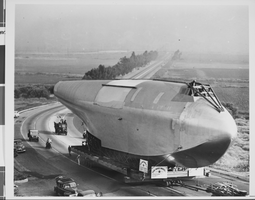
Photograph of Howard Hughes' Hercules, Culver City, California, June 16, 1946
Date
1946-06-16
Archival Collection
Description
Description given with photo: "Hull of "Hercules" Starts Journey to Assembly Dock, Culver City, Calif. - The 220-foot-long fuselage of Howard Hughes' gigantic airplane crawls down the highway on truck dollies after leaving the Culver City, Calif., plant. the hull is on its way to the graving dock for assembly at Terminal Island, Calif., 28 miles away. Note size of man on top of hull. NY EUR CAN. Credit (ACME) 6/16/46"
Image
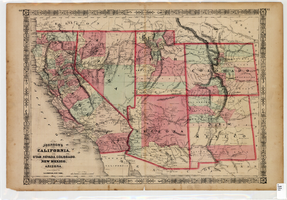
Map of California, Utah, Nevada, Colorado, New Mexico and Arizona, 1864
Date
1864
Description
'Johnson's California, also Utah, Nevada, Colorado, New Mexico, and Arizona, published by A.J. Johnson, New York.' 'Entered according to Act of Congress in the Year 1864, by A.J. Johnson in the Clerks Office of the District Court of the United States for the Southern District of New York.' Atlas page numbers in upper margin: 66-67. Relief shown by hachures. Prime meridians: Greenwich and Washington, D.C. Shows proposed railroads, locations of Indian tribes, natural features, counties, mines, mail routes, trails and routes of exploring expeditions. On verso: History and statistics of Mexico and Central America and statistics of national finances and the Post Office of the United States, 1860. Scale [ca. 1:3,484,800. 1 in. to ca. 55 miles] (W 123°--W 103°/N 42°--N 32°)
Text
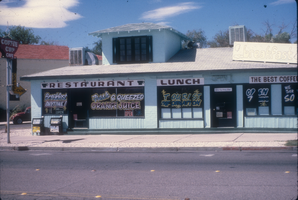
Slide of the Coffee Cup Cafe, Boulder City, Nevada, 1986
Date
1986
Archival Collection
Description
A color image of the exterior of the Coffee Cup Cafe and its neon signs. Site Name: Coffee Cup Cafe (Boulder City, Nev.)
Image
Pagination
Refine my results
Content Type
Creator or Contributor
Subject
Archival Collection
Digital Project
Resource Type
Year
Material Type
Place
Language
Records Classification
